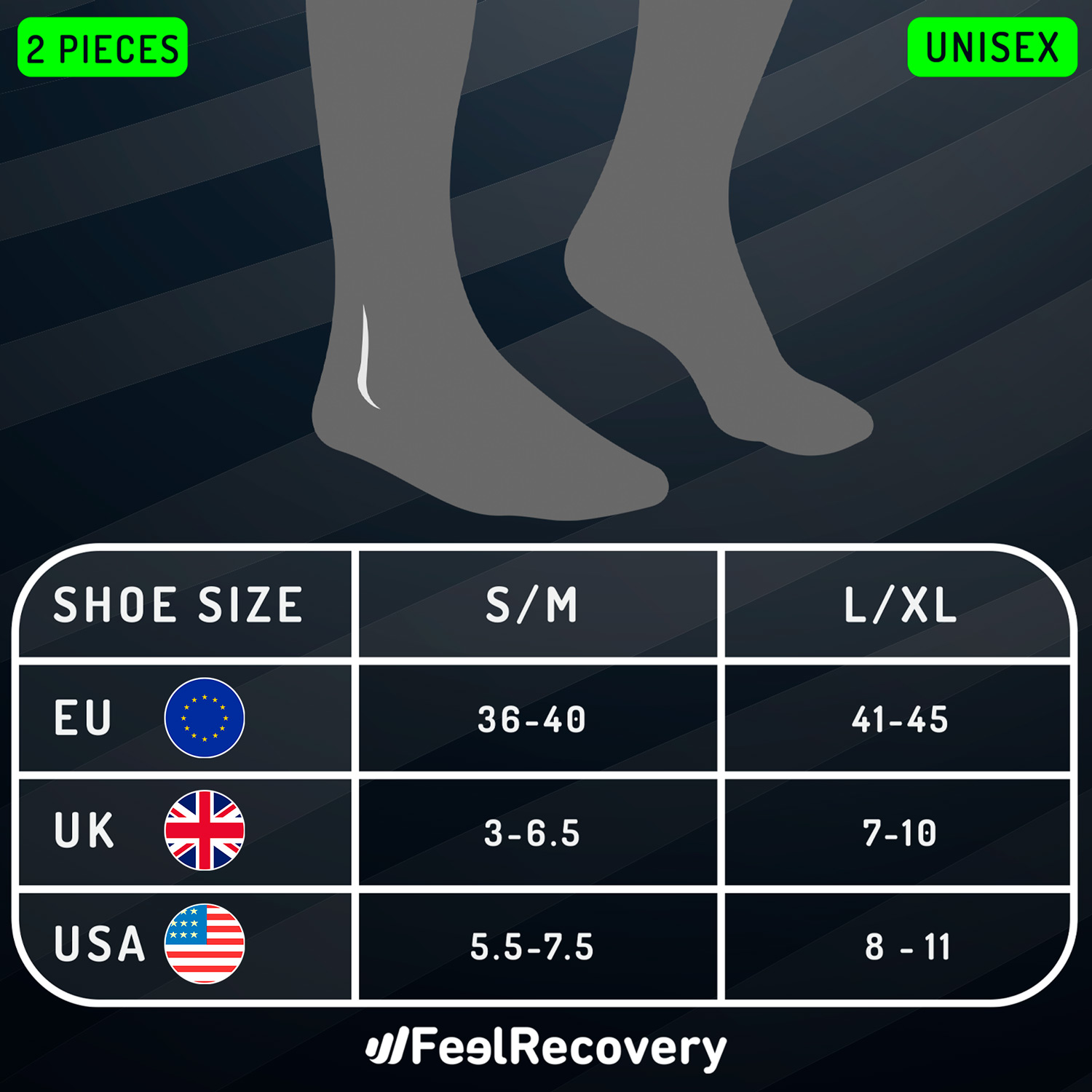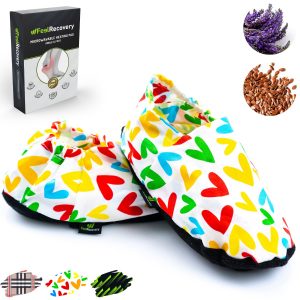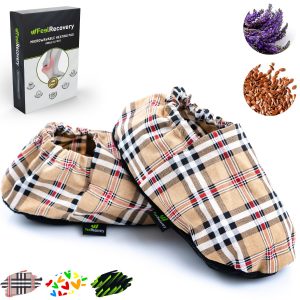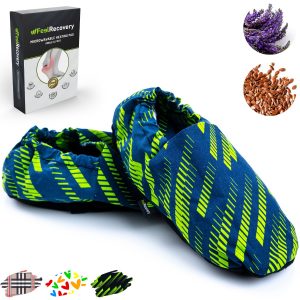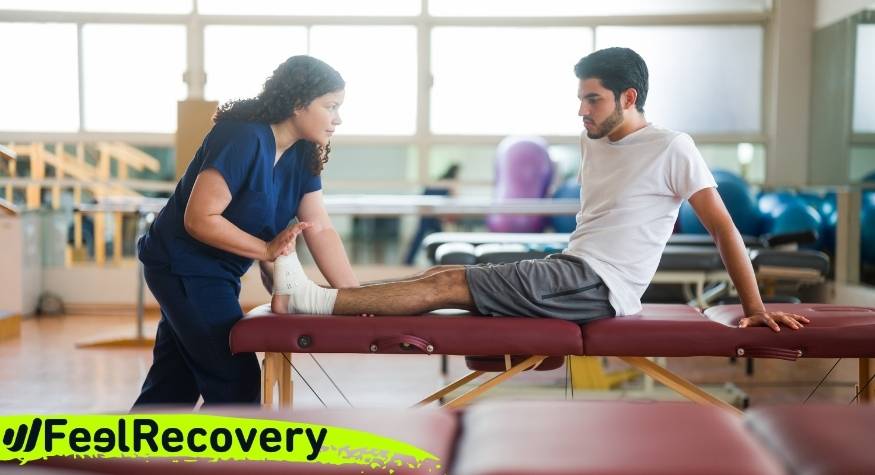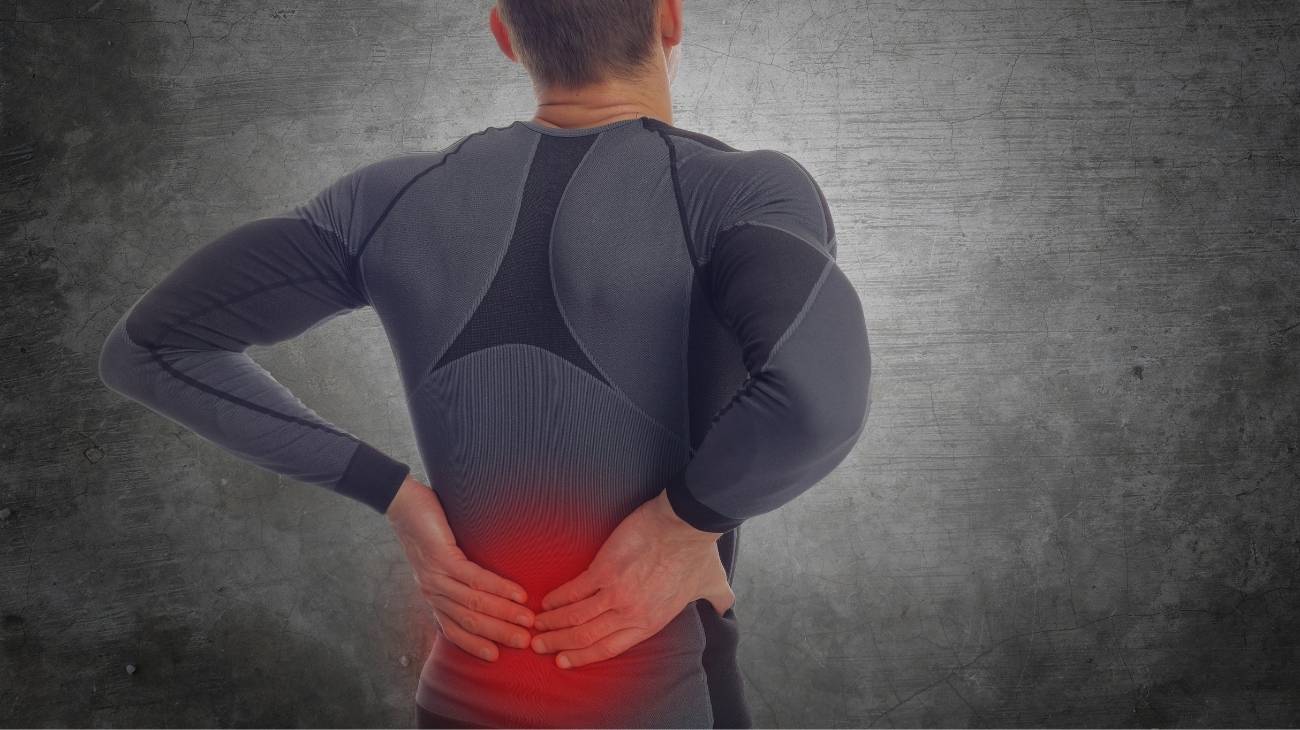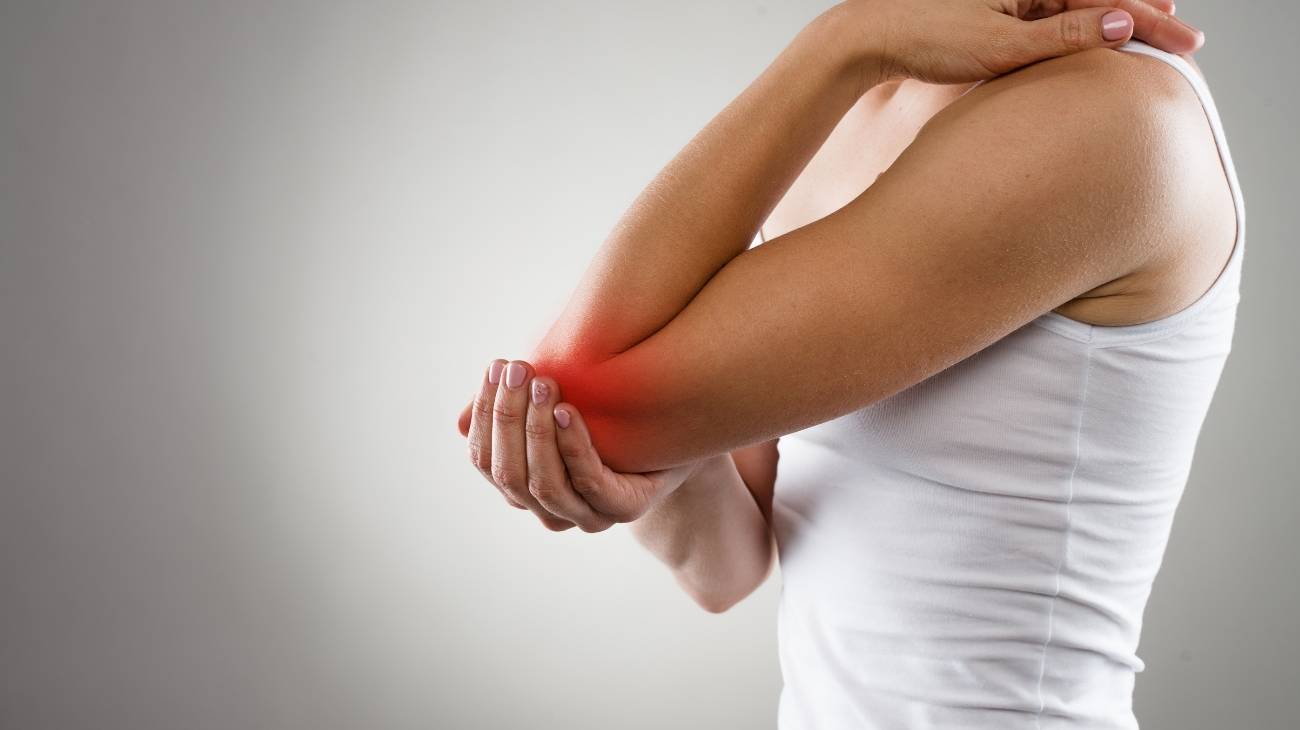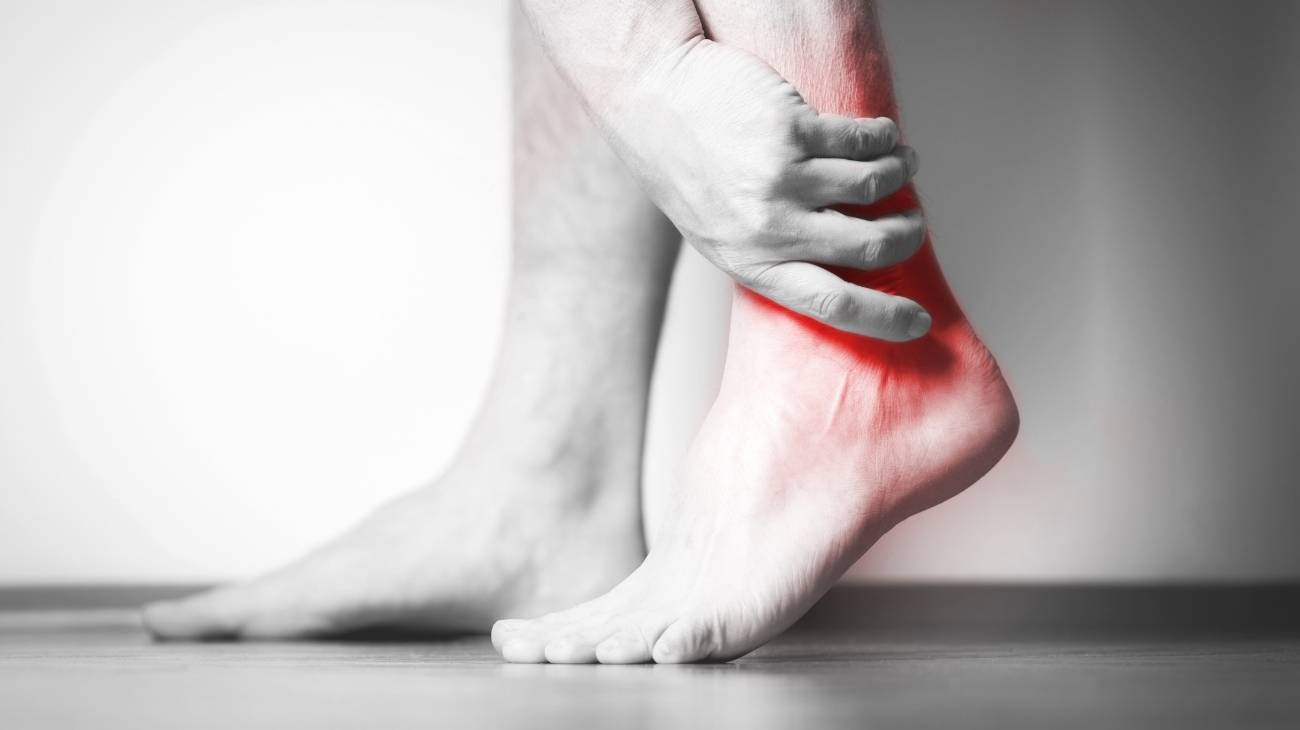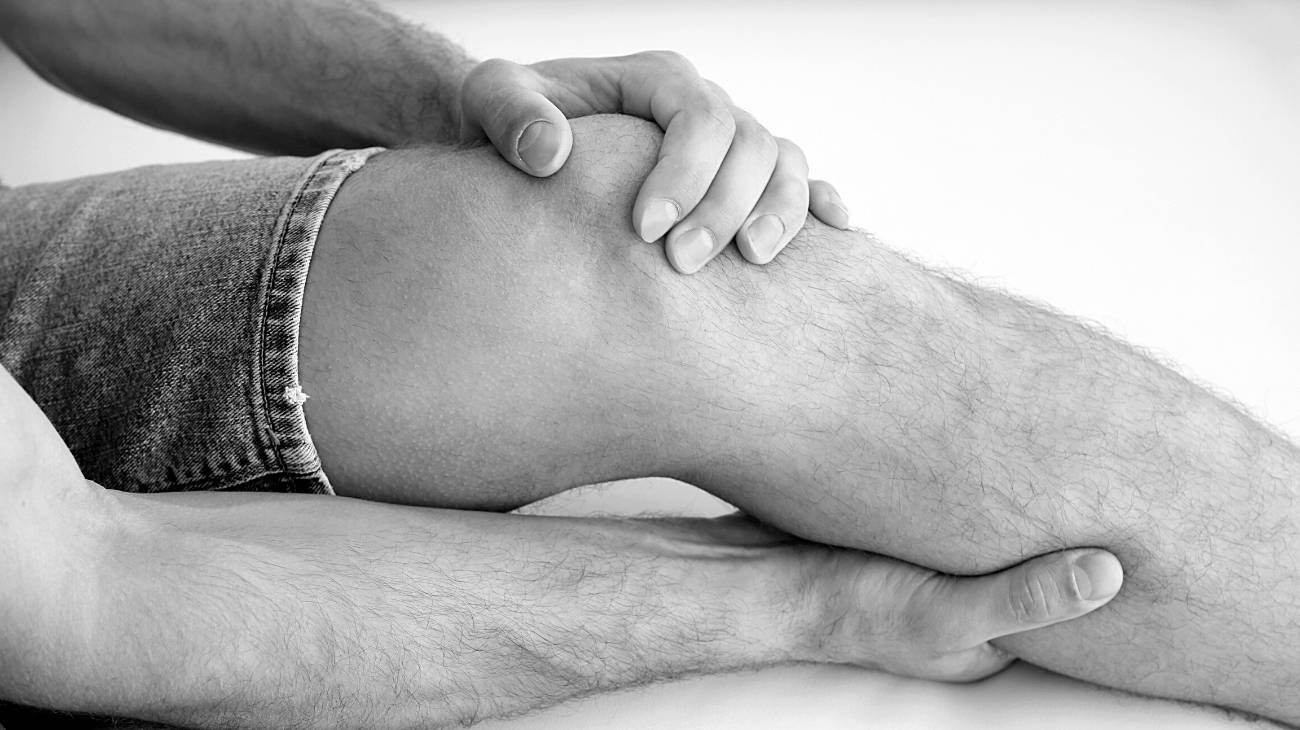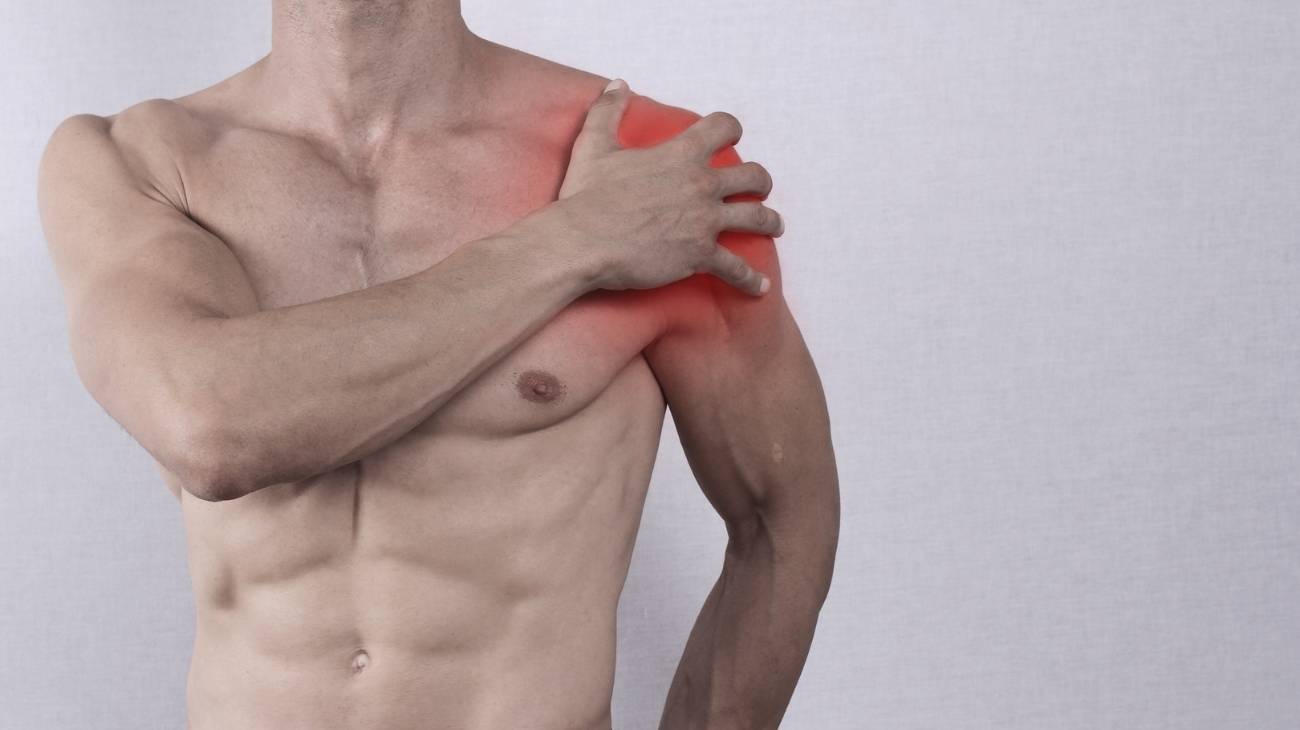- What is an ankle sprain and what are the different degrees?
- What are the causes and risk factors for an ankle sprain?
- Best products for ankle sprain
- Main symptoms that warn us that we have an ankle sprain
- What treatments are available to improve the symptoms of an ankle sprain?
- What prevention methods for ankle sprains are the most effective?
A ligament is a ligament that has the function of stabilising joints to prevent excessive movement. Therefore, when the ligament is stretched beyond its limit, a partial or total rupture occurs, resulting in a sprain. Consequently, if this occurs in the ankle ligaments (especially on the outer side), an ankle sprain results.
In sports and in many eventualities, these are the main injuries that people contract once the ligaments in the malleolus area are strained. Given their common occurrence, it is important to know what they are and what their causes, symptoms, treatments and precautions are.
What is an ankle sprain and what are the different degrees?
Basically, an ankle sprain is an injury or strain to one or more ligaments connected to the bones in this part of the body. It is a sprain that occurs when the joint is bent, twisted or rotated suddenly and abruptly. Such movements are responsible for stretching and/or tearing the tough bands of tissue that help hold the ankle bones together.
However, in order to formulate a treatment with which the patient can recover the functionality of the ankle, it is first of all essential to take into account the severity of the ankle sprain and the symptoms that have triggered the condition. This type of sprain has a classification based on the three levels of severity that reveals the magnitude of the injury and its symptoms.
Here, we mention what they are:
Grade 1
This is the result of a slight strain of the ligaments. As a result, there is no rupture of any kind in this portion of the ankle and the patient has no associated joint laxity. The patient is able to make full movements, the pain is mild and the inflammatory process is minimal.
Grade 2
When a Grade 2 ankle sprain is triggered, the affected individual suffers from partial ligament rupture and therefore, immediate swelling is created and is more accentuated. In addition, the pain is more intense, bruising (ecchymosis) occurs and the impacted region even tends to become deformed. As a result, it is difficult for the patient to support the affected foot and put weight on it, i.e. there is slight joint instability. Because of all this, it is classified as a moderate sprain.
Grade 3
This is an ankle injury that reaches the highest level of severity, as it results in the rupture of the entire ligamentous tissue (or more than 50%). As a consequence, the pain is more severe, there is deformity and raised ecchymosis, as well as really intense swelling and functional impotence of the affected joint. Because of this, the patient will feel the ankle is lax and unstable, so that no weight can be placed on the foot.
What are the causes and risk factors for an ankle sprain?
Generally speaking, an ankle sprain is caused once the ankle is forced beyond its usual position, causing the ligaments located there to be stretched abruptly. Specifically, however, there are different risk factors that can cause a person to suffer an injury in this category and suffer the symptoms it triggers.
That is why, in the form of a list, we list the most common reasons for spraining an ankle or malleolus:
- Frequently, an ankle injury based on twisting the ankle so that the sole of the foot points inwards and stretches the ligaments is one of the main reasons for a lateral ligament sprain.
- Accidental falls that cause you to twist your ankle are also common causes of a lateral ligament sprain.
- Direct blows or trauma to this region of the lower extremities tend to cause sprains.
- When walking or exercising on an uneven surface, the risk of sprains increases.
- If you jump or twist and when you land again there is an abnormal movement of the foot, you are likely to suffer an ankle sprain.
- If you are engaged in a sporting activity and a person steps on your foot or falls on it, this will also trigger an ankle sprain.
- Wearing inappropriate footwear, whether it does not fit your feet properly, is not suitable for a specific activity or is a high-heeled shoe; the ankles will be much more vulnerable to this injury.
- Poor physical condition of the patient. If you do not exercise regularly, you will not have strength or flexibility in that part of the ankle, so it can become distended until the ligaments rupture.
- Being overweight or obese is a condition that increases the possibility of suffering injuries or sprains in the lower extremities, which, of course, include the ankles.
- The practice of sports that require sudden changes of direction (football, basketball and handball, for example), generate ankle sprains with great frequency.
- In many cases, the lack of warm-up and stretching before and after physical activity has led to sprains in the malleolus area.
- Depending on the shape of their foot, many people are more at risk of experiencing a sprained ankle, whether it be Achilles tendon, varus, cavus forefoot and valgus rearfoot, for example.
- Individuals with previous ankle injuries are two to three times more likely to re-injure a sprain or other similar condition compared to people who have not sprained their ankle.
- Another risk factor, of course, is age. The older you are, the more wear and tear you have on your joints and the more prone you are to injury.
Best products for ankle sprain
Bestseller
-
2 Ankle Compression Sleeve (Black/Gray)
£17,50 -
2 Ankle Compression Sleeve (Green/Navy)
£17,50 -
2 Ankle Compression Sleeve (Pink/Bordeaux)
£17,50 -
Ice Pack for Foot - Cold Therapy Socks (Black)
£21,95 -
Ice Pack for Foot - Cold Therapy Socks (Green)
£21,95 -
Ice Pack for Foot - Cold Therapy Socks (Pink)
£21,95 -
Microwavable Heated Slippers (Hearts)
£21,50 -
Microwavable Heated Slippers (Oxford)
£21,50 -
Microwavable Heated Slippers (Sport)
£21,50 -
Microwaveable Wheat Bag for Pain Relief (Hearts)
£17,50 -
Microwaveable Wheat Bag for Pain Relief (Oxford)
£17,50 -
Microwaveable Wheat Bag for Pain Relief (Sport)
£17,50 -
Sport Compression Socks (1 Pair) (Black/Gray)
£17,50 -
Sport Compression Socks (1 Pair) (Green/Navy)
£17,50 -
Sport Compression Socks (1 Pair) (Pink/Bordeaux)
£17,50
Main symptoms that warn us that we have an ankle sprain
By nature, whenever an ankle sprain occurs, a series of signs and symptoms are triggered that are essential to diagnose this type of joint condition. Depending on the level of severity of the sprain, the intensity of the condition will increase.
- Prominent pain in the ankle area. Especially, when the person supports his or her body weight on the injured foot.
- Inflammation or swelling of the ankle and/or in the lateral area on palpation.
- Skin discolouration changes in the form of bruising or bruising. Depending on the severity of the sprain, the discolouration may worsen.
- A feeling of discomfort or discomfort to the touch. This tends to increase the pain exhibited by the patient.
- Instability of the joint and difficulty in resting the foot on any surface. This makes it difficult for the patient to walk.
- Limited range of motion or restriction of movement to the outside of the malleolus.
- Audible cracking or popping of the joint at the time of injury (occasionally).
- If the sprain is not treated in time, complications such as chronic ankle pain, permanent joint instability and arthritis in the impacted region are possible.
What treatments are available to improve the symptoms of an ankle sprain?
To alleviate the symptoms of a sprained ankle, there are nowadays different treatments that can eliminate the pain and regulate the functioning of the joint. Thus, depending on the scope or possibilities of each patient, they can take certain alternative therapies, undergo physiotherapy treatment, use natural remedies, consume various nutritional supplements and ingest formulated drugs in order to speed up the rehabilitation process.
Alternative and complementary therapies
Whereas they are mainly methods that are characterised by an analgesic, anti-inflammatory and sedative effect to alleviate the ailment. We highlight what they are and how they are generally implemented:
- Heat and cold therapy: This refers to a treatment that uses the properties of heat and cold to soothe pain and reduce inflammation when a musculoskeletal pathology occurs. Cold has analgesic and anti-inflammatory effects, while heat helps to increase blood circulation and reduce pain. Thus, when treating a sprained ankle, it is recommended to apply cold for the first few days after the injury (24 to 72 hours) to speed up the recovery time; either with cold water compresses, ice packs or frozen vegetables and for a period of 15 to 20 minutes every 2, 3 or 4 hours. After 72 hours, heat can be applied to the affected area with compresses or gel packs, alternately.
- Compression therapy: Another medical recommendation to improve this injury is based on the use of compression therapy, which consists of using an elastic element to exert a controlled force on a region of the body and reduce blood flow, as well as regulating the functioning of the vascular wall to soothe the pain. In this case, patients should wear a compression bandage or a sports ankle brace (firm, but not too tight to avoid hindering circulation) to stop swelling in the area.
- Massage therapy: Many injuries are treated with massage, as the various techniques available are able to relax a strained area in order to speed up rehabilitation and restore full mobility. In that sense, to relieve a sprain of this type of sprain, one of the recommended alternatives is ankle pumping. This favours the drainage and ascent of all the substances accumulated around the impacted region, and is practised between 5 and 10 minutes several times a day (for 3 or 4 days after the injury). In this way, it provides optimal results by accelerating the healing process by helping to clear the bleeding and oedema that accompanies the injured ankle.
- Acupuncture therapy: Traditional Chinese medicine proposes acupuncture as a therapeutic method that has a healing power in the human body as it is considered a system of energy flows. Consequently, it understands pathologies as the consequence of a disproportion of the vital energy that circulates through the organism (qi) and to eliminate this imbalance, it inserts fine needles in the acupuncture (or strategic) points with the aim of calming pain, reducing inflammation and improving the regenerative capacity of the affected tissues. Therefore, it is essential to visit a TCM expert who employs the relevant techniques to improve a sprained ankle.
- Natural remedies using plants: It is also useful to resort to inherent medicine that uses plants to take advantage of all their properties to eliminate pain and inflammation and to relax the areas of the body that have been afflicted. This means that a patient with a sprained ankle can recover from the injury with natural remedies that combat the characteristic symptoms and precipitate healing. In this case, such remedies consist of the following: Moisten a couple of tablespoons of turmeric powder with water to rub on the ankle and cover it with a bandage, apply arnica essential oil with gentle massage for 5 minutes, use a clay poultice every night and drink infusions of horsetail, ginger, rosemary, celery, eucalyptus or birch.
- Healthy lifestyle habits: Healthy lifestyle habits are also essential to soothe the discomfort caused by a sprain and even prevent this type of ailment. Thanks to this, the organism in general becomes much more powerful to achieve a good general functioning and to hinder the appearance of different illnesses. In the case of malleolus sprains, they can be lessened by the following: Practising sports gradually to avoid a sedentary lifestyle and strengthen the joints, having a healthy and balanced diet, preventing being overweight or obese, wearing footwear that fits your feet perfectly, performing muscle stretching and not overstretching the lower limbs.
Nutritional supplements
Nutritional or food supplements are products that are distinguished by their properties rich in vitamins, minerals, amino acids, enzymes and/or herbs. For this reason, it is recommended that people complement a balanced diet with these supplements in order to provide the body with the substances it needs to ensure optimal wellbeing.
Another effective method to improve the symptoms of a sprained ankle is to consume certain food supplements that promote joint care, relieve pain and eliminate inflammation to speed up the rehabilitation process of a patient.
Here, we highlight which substances are necessary to treat a sprained ankle:
- Hyaluronic acid: This substance is found in numerous tissues and organs of the human body and medically, it is indicated to treat joint pain and stiffness, thanks to that, it can soothe pain and speed up recovery from a sprained or injured ankle. For this, health professionals usually give two injections of hyaluronic acid to improve the functional state of the affected joint. However, patients can naturally consume certain foods that stimulate this element in the body, such as beef, veal, lamb, turkey, duck, whole grains, brown rice, yeast, parsley, coriander, peanuts, beans, starchy tubers, green and red peppers, etc.
- Calcium: This is an essential mineral in the human body that mainly promotes bone strength and prevents bones from breaking. Therefore, if your body is not deficient in calcium, it will allow the reconstruction of the ligamentous tissue affected by the sprain to be faster and more efficient, as well as giving much more strength to the injured ankle after its recovery process. That is why we recommend eating foods rich in calcium, such as: dairy products (cheese, milk, yoghurt, etc.), salmon, sardines, nuts (walnuts, hazelnuts, almonds, etc.), red beans, broccoli, kale, oranges, apricots, currants, figs, etc.
- Vitamin C: It is a fundamental substance to maintain the health of ligaments and tendons, because it participates in the synthesis of high quality collagen in the organism and provides an analgesic and anti-inflammatory effect when there is an injury, as in the case of sprains. In addition, it is ideal for strengthening the ankle and the immune system, which prevents patients from contracting further illnesses while your body repairs the joint. The best food sources of vitamin C are: spinach, cauliflower, broccoli, cabbage, grapefruit, oranges, pineapple, kiwi, melon, guava, papaya, potatoes, red and green peppers, etc.
- Vitamin D: Another vitamin capable of strengthening the ankle after a sprain, this is because it is responsible for absorbing the necessary calcium and phosphorus. Taking into account that, when a sprain occurs in this lower part of the body, the body chooses to use the levels of calcium and phosphorus to speed up the recovery process and regulate the functioning of the affected area. By nature, this substance can be obtained through sunlight and also through products such as: tuna, sardines, salmon, trout, mackerel, oysters, beef liver, egg yolk, cheese and mushrooms, for example.
- Collagen: Specifically, collagen acts in the repair of ligaments and tendons that are damaged when an individual suffers a sprained ankle (or similar injury). Thus, it is involved in joint health and even strengthens bones in an optimal way. It is therefore relevant for improving the symptoms of such a sprain and improving joint mobility at its best. In addition, natural collagen intake is known for eliminating pain and inflammation in the joints. In fact, it is essential that you consume collagen from: eggs, milk, cheese, oily fish, meat, nuts, gelatine, strawberries, cherries, celery, avocado, onion, etc.
- Phosphorus: It is considered an essential mineral or nutrient in each of the cells present in the human body. It works together with calcium to keep bones strong and is essential for the growth, maintenance and repair of tissues and cells, as well as helping to reduce muscle pain. It is therefore considered helpful in relieving the symptoms of an ankle sprain and to obtain its benefits, patients should eat such things as: cheese (goat, Parmesan or Romano), lean beef and pork, nuts (walnuts, almonds and cashews), fish (white fish, salmon and cod), as well as tofu and other soy-rich products.
Physiotherapy treatments
Physiotherapy is a health science that, by means of different techniques, practices and exercises, helps patients with limited movement due to injury or any other cause, to recover and improve the mobility of their limbs and joints.
In this case, the treatment will mainly focus on reducing inflammation, recovering the injured tissue, restoring normal mobility, re-establishing the range of movement, optimising stability and strengthening the ankle that has been abruptly impacted, in order to increase the strength and flexibility of this essential joint.
Exercises that can be performed during the rehabilitation of an injured ankle include the following:
- Mobility exercises: These are usually performed early in the healing process so that the person can regain a normal range of motion. One of the practices used for this consists of "writing with the foot" after placing an ice pack for 20 minutes. For this, the patient will have to trace the letters of the alphabet in the air and with the thumb of the affected foot, three times a day until full movement of the ankle is obtained.
- Resistance exercises: Once the person reaches full mobility, the physiotherapist chooses to begin resistance exercises using an elastic band to do 30 repetitions of each exercise for three times daily (resting for three seconds for each repetition). Techniques such as plantar flexion, inversion, dorsiflexion and eversion are used.
- Strengthening exercises: It is also essential to carry out practices that help to strengthen the injured joint, as well as to improve the flexibility of the calf muscles and the Achilles tendon. To achieve this, primarily, exercises that involve mobilising the ankle in its natural range of motion, bending backwards, forwards, inwards and outwards. Exercises can also be added in the "tiptoe" position (count to three on tiptoe, first with the foot forward, then inwards and outwards).
- Balance or stability exercises: These are all exercises that reduce the risk of further injury by about 50%. One of the most commonly used in these cases is based on standing on the injured limb to raise the other limb by making small jumps (like the game "a la pata coja") for one minute (this can be done three times a day and repeated for 5 minutes in each session).
- Functional exercises: To finish with the rehabilitation plan and when the objectives set by the physiotherapist through the previous exercises have been achieved, it is time to start with the functional exercises to give more strength to the joint. Whether it is jogging, jumping, running, lateral displacements, jumping with feet together, etc.
Medications
In most cases, when a person suffers a sprained ankle or any other part of the body, he or she self-medicates with over-the-counter drugs (e.g. ibuprofen, paracetamol and naproxen) to try to relieve the pain and discomfort caused by the injury.
However, this is inappropriate because it is a harmful practice that tends to trigger other pathologies, due to possible side effects (diarrhoea, nausea, dizziness, fainting, drowsiness, fatigue, addiction and in the worst cases, cardiac arrest).
Therefore, before taking any medication, it is essential that the patient has a medical appointment with a specialist or traumatologist who can closely analyse the condition and thus determine how serious it has become in order to provide the correct diagnosis.
Thus, in addition to obtaining an accurate diagnosis of the ankle sprain, the health professional will be able to prescribe the most suitable and efficient treatment to attack the ailment so that the joint can function normally again and the rehabilitation process will be quicker.
In that sense, together with the treatment, he will surely formulate the most relevant drugs to attenuate the injury, taking into account some details in order to avoid the manifestation of any harmful side effects.
Surgery
Ankle sprains or strains can almost always be recovered with non-surgical treatment. This means alternative therapies, physiotherapy exercises, various recommended dietary supplements and the use or application of drugs prescribed by a specialist. However, this is possible in the case of a first or second degree sprain.
Consequently, if a third-degree sprain manifests itself and achieves its highest degree of severity, the healing process is different. Since, in most cases, it is difficult to remedy an ankle that remains unstable even after undergoing a long period of physiotherapy and recovery practices. Therefore, surgery is necessary to reconstruct the ligament with tissue from another nearby ligament/tendon or to completely repair a ligament that will not heal.
What prevention methods for ankle sprains are the most effective?
Although many ankle sprains are caused by a sudden accident or event, people can adopt different methods of care or prevention to reduce their chances of spraining their ankle.
- Wear proper shoes that fit your feet: Putting on shoes that are comfortable, fit snugly (putting pressure on the ankle or other joints) and are appropriate for the activity is essential to avoid a sprained ankle. It is therefore advisable not to wear high heels frequently.
- Play sport and keep fit: This will help you to strengthen your muscles and joints, as well as prevent a sedentary lifestyle. However, don't forget that the ideal is to exercise gradually and not to exert yourself more than your body can cope with at any given time.
- Warm up before any physical activity: By default, warming up is essential to train stability and prevent the development of injuries due to inadequate effort during exercise.
- Use ankle immobilisers when necessary: For example, you can use an ankle brace or ankle brace/strap to prevent a sudden movement from impacting the joint directly.
- Maintain a healthy and balanced body weight: As being overweight or obese is one of the main risk factors for ankle (or lower limb) sprains.
- Walk very carefully on uneven surfaces: If you need to walk or run on a surface that is not flat, avoid inappropriate movements and be cautious throughout the journey.
- Do not participate in unfamiliar sporting or extreme activities: It is valuable to avoid all practices for which your ankles are not accustomed or have not been previously prepared.
- Do stability and balance exercises: While doing them, focus on developing proprioception, or the ability to naturally regain balance, in order to improve your stability and prevent ankle injuries.
References
- Fong, D. T. P., Hong, Y., Chan, L. K., Yung, P. S. H., & Chan, K. M. (2007). A systematic review on ankle injury and ankle sprain in sports. Sports medicine, 37, 73-94. https://link.springer.com/article/10.2165/00007256-200737010-00006
- Wolfe, M. W., Uhl, T. L., Mattacola, C. G., & McCluskey, L. C. (2001). Management of ankle sprains. American family physician, 63(1), 93. https://europepmc.org/article/med/11195774
- Yeung, M. S., Chan, K. M., So, C. H., & Yuan, W. Y. (1994). An epidemiological survey on ankle sprain. British journal of sports medicine, 28(2), 112-116. https://bjsm.bmj.com/content/28/2/112.short
- Tropp, H., Askling, C., & Gillquist, J. A. N. (1985). Prevention of ankle sprains. The American Journal of Sports Medicine, 13(4), 259-262. https://journals.sagepub.com/doi/abs/10.1177/036354658501300408
- Russell, J. A. (2010). Acute ankle sprain in dancers. Journal of dance medicine & science, 14(3), 89-96. https://www.ingentaconnect.com/content/jmrp/jdms/2010/00000014/00000003/art00003
- Nitz, A. J., Dobner, J. J., & Kersey, D. (1985). Nerve injury and grades II and III ankle sprains. The American journal of sports medicine, 13(3), 177-182. https://journals.sagepub.com/doi/abs/10.1177/036354658501300306
- Derscheid, G. L., & Garrick, J. G. (1981). Medial collateral ligament injuries in football: nonoperative management of grade I and grade II sprains. The American Journal of Sports Medicine, 9(6), 365-368. https://journals.sagepub.com/doi/abs/10.1177/036354658100900605
- Thompson, C., Kelsberg, G., & St Anna, L. (2003). Heat or ice for acute ankle sprain?. https://mospace.umsystem.edu/xmlui/handle/10355/2939
- Nunley, J. A., & Vertullo, C. J. (2002). Classification, investigation, and management of midfoot sprains: Lisfranc injuries in the athlete. The American journal of sports medicine, 30(6), 871-878. https://journals.sagepub.com/doi/abs/10.1177/03635465020300061901
- Roach, C. J., Haley, C. A., Cameron, K. L., Pallis, M., Svoboda, S. J., & Owens, B. D. (2014). The epidemiology of medial collateral ligament sprains in young athletes. The American journal of sports medicine, 42(5), 1103-1109. https://journals.sagepub.com/doi/abs/10.1177/0363546514524524














